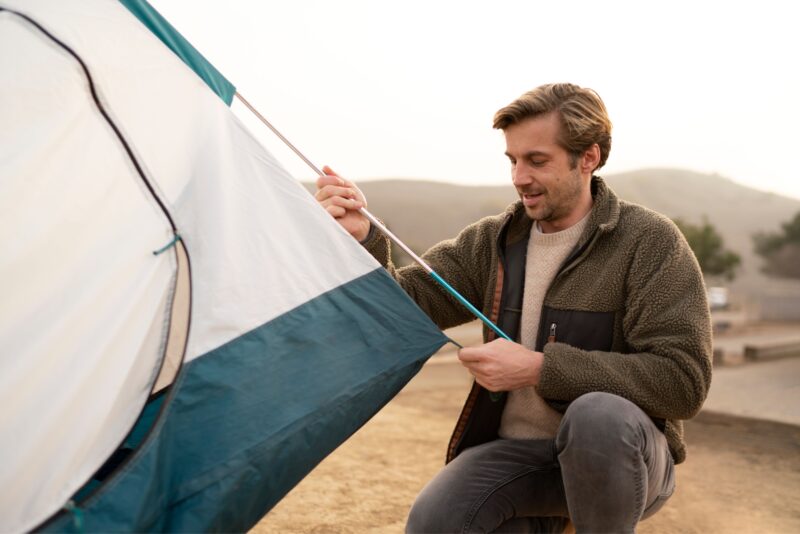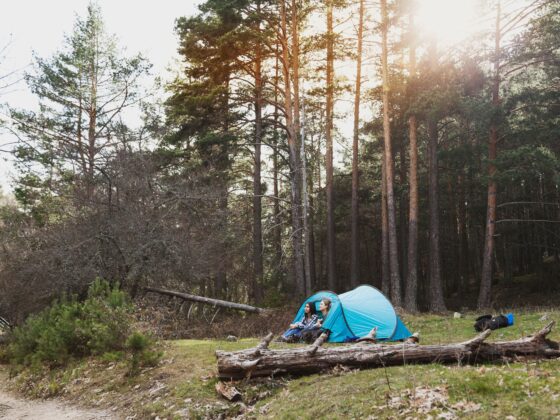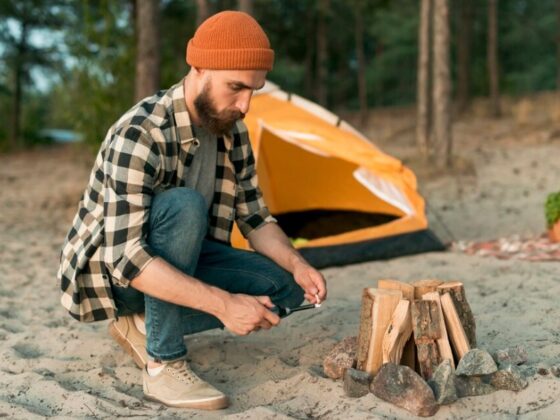Camping is an exhilarating outdoor activity that allows you to connect with nature and create unforgettable memories. However, the success of your camping trip largely depends on the equipment you choose, and tent pegs are often overlooked as a critical component. These unsung heroes of the camping world play a vital role in securing your outdoor tent and ensuring a comfortable and safe experience.
Importance of Tent Pegs in Camping
Tent pegs are the anchors that hold your tent in place, preventing it from blowing away or collapsing in adverse weather conditions. They provide stability and prevent your tent from shifting, ensuring a secure and sturdy setup. Without proper tent pegs, your camping experience can quickly turn into a frustrating and potentially dangerous situation.
Types of Tent Pegs
Tent pegs come in a variety of materials, shapes, and sizes, each designed to meet the needs of different camping conditions and terrain. Here are some of the most common types of tent pegs:
- Metal Tent Pegs: These are the most durable and long-lasting option, typically made of aluminum, steel, or titanium. They are suitable for a wide range of camping conditions and can withstand heavy winds and tough soil.
- Plastic Tent Pegs: Lightweight and affordable, plastic tent pegs are a popular choice for casual campers and backpackers. They are not as durable as metal pegs but can be effective in softer soils.
- Wooden Tent Pegs: Crafted from natural materials, wooden tent pegs offer a more eco-friendly and traditional option. They are lightweight and can be suitable for mild weather conditions, but may not be as sturdy as metal or plastic pegs.
- Screw-In Tent Pegs: These innovative tent pegs feature a spiral design that allows them to be screwed directly into the ground, providing a secure and stable hold. They are particularly useful in hard or rocky terrain.
- Y-Shaped Tent Pegs: Designed with a Y-shaped profile, these tent pegs offer increased surface area and stability, making them ideal for soft or sandy soils.
Factors to Consider When Choosing Tent Pegs
When selecting the best tent pegs for your camping trip, there are several factors to consider:
- Terrain and Soil Type: The type of terrain and soil you’ll be camping on will determine the most suitable tent pegs. For example, soft, sandy soil may require longer, more flexible pegs, while hard, rocky ground may call for screw-in or heavy-duty metal pegs.
- Weather Conditions: If you’re camping in areas with high winds or heavy rain, you’ll need sturdy, heavy-duty tent pegs that can withstand the elements and keep your tent securely in place.
- Tent Size and Weight: The size and weight of your tent will also influence the type of tent pegs you should choose. Larger, heavier and heavy-duty tents may require more substantial pegs to provide the necessary support.
- Portability and Weight: If you’re backpacking or hiking to your campsite, you’ll want to opt for lightweight tent pegs that won’t add too much bulk to your gear.
- Durability and Reusability: Consider the longevity of the tent pegs, as you’ll want to invest in a set that can withstand repeated use and maintain their integrity over multiple camping trips.
Best Tent Pegs for Different Camping Conditions
Heavy-Duty Tent Pegs for Extreme Weather Conditions
For camping in areas with extreme weather conditions, such as high winds, heavy rain, or snow, you’ll need heavy-duty tent pegs that can provide maximum stability and hold. Look for tent pegs made of sturdy materials like aluminum, steel, or titanium, with a thicker gauge and a more substantial design. These types of pegs are less likely to bend or break under the strain of harsh elements.
Lightweight Tent Pegs for Backpacking Trips
When embarking on a backpacking adventure, weight is a critical factor to consider. Opt for lightweight tent pegs, such as those made from aluminum or titanium, to minimize the overall weight of your gear. These pegs are often designed with a more compact and streamlined profile, making them easy to pack and transport.
Tent Pegs for Different Terrains
The type of terrain you’ll be camping on should also influence your choice of tent pegs. For soft, sandy, or loose soil, consider using longer, more flexible pegs that can better grip the ground. In hard, rocky, or frozen terrain, screw-in or heavy-duty metal pegs may be the better option to ensure a secure hold.
Best Camping Sites in the Philippines
The Philippines is home to a diverse range of stunning natural landscapes, making it an ideal destination for camping enthusiasts. Some of the best camping sites in the Philippines include:
- Mount Pulag National Park: Located in the Cordillera region, Mount Pulag is the third-highest mountain in the Philippines and offers breathtaking views of the “sea of clouds.”
- Palaui Island: This remote island in the northernmost part of the Philippines boasts pristine beaches, rugged cliffs, and lush forests, providing an off-the-grid camping experience.
- Siargao Island: Known as the “Surfing Capital of the Philippines,” Siargao also offers excellent camping opportunities, with stunning beaches and a laid-back island vibe.
- Coron, Palawan: The Calamian Islands in Coron are home to crystal-clear waters, towering limestone cliffs, and a variety of camping sites that cater to both adventure-seekers and nature lovers.
- Boracay Island: While Boracay is famous for its vibrant nightlife, it also offers opportunities for camping, with several eco-friendly campsites dotting the island’s stunning white-sand beaches.
Tips for Setting Up Your Tent Using Tent Pegs
Properly setting up your tent with the right tent pegs can make a significant difference in the overall comfort and stability of your camping experience. Here are some tips to keep in mind:
- Identify the Terrain: Assess the ground conditions and choose the appropriate tent pegs for the soil type.
- Angle the Pegs: Drive the tent pegs into the ground at a 45-degree angle, pointing away from the tent. This will provide a stronger hold and prevent the pegs from pulling out.
- Use Guy Lines: Attach guy lines to the tent’s corners and secure them with additional tent pegs to increase stability and prevent the tent from collapsing in windy conditions.
- Hammer the Pegs In: Use a mallet or the back of a sturdy object to firmly drive the tent pegs into the ground, ensuring a secure hold.
- Check for Tightness: Regularly check the tension of your tent’s guy lines and the stability of the tent pegs, and adjust as needed to maintain a secure setup.
To ensure your next camping trip is a success, explore our wide selection of high-quality tent pegs and camping gear at our online store. Browse our collection and find the perfect equipment to meet your outdoor needs.
Conclusion
Choosing the right tent pegs is a crucial step in planning a successful and enjoyable camping trip. By considering factors such as terrain, weather conditions, and portability, you can select the best tent pegs to keep your shelter secure and provide a comfortable base for your outdoor adventures. Whether you’re embarking on a backpacking expedition or setting up camp in the Philippines, the right tent pegs can make all the difference in making your camping experience truly memorable.



